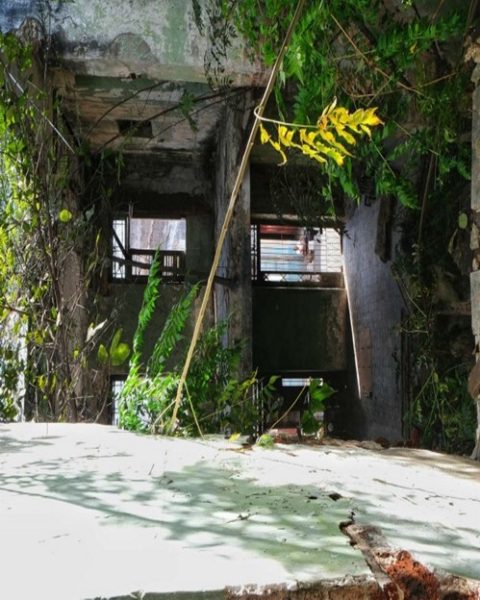The Phantom of the One Hundred Thousand Pesos
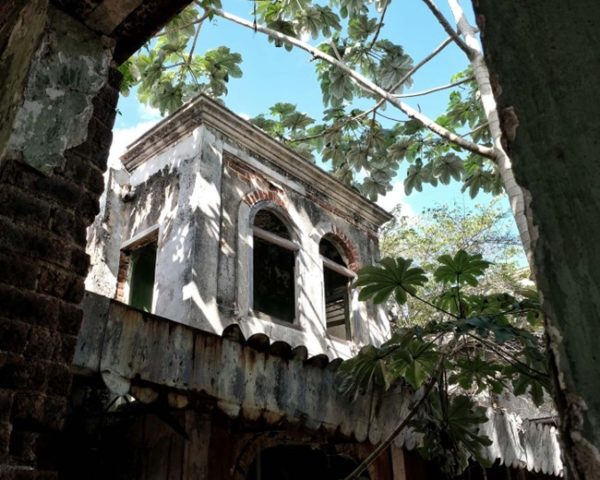
It’s not a problem unique to Matanzas: the phantom of destruction haunts Cuba. Physical and spiritual destruction of heritage.
HAVANA TIMES – Here, where there is a park, some of us still see the “One Hundred Thousand Pesos Building”; a mansion that, as soon as you cross the La Concordia bridge coming from Havana, welcomes you to the center of the city of Matanzas. Only now it’s a ghost building. It finished dying —defeated by time, lack of interest, and money— fifteen years ago.
The children who play there with their bikes, skooters, and tops never saw the spacious entrance hall, its four-meter-high arches, its ten slender columns, or the white marble staircase that led to the second floor. For them, what has always existed are some cement benches where almost no one sits, an ugly and dysfunctional fountain, and the shade of the trees. Before the park, there were ruins in danger of collapse and a trash heap, so it’s not so bad, I suppose.
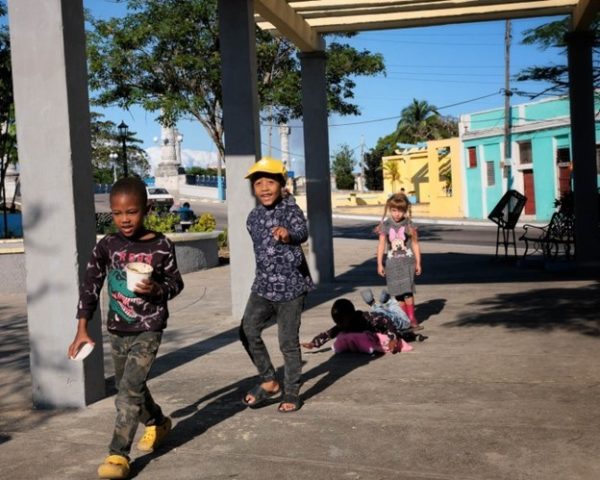
Towards one of the corners, the Cuban flag waves with the breeze coming from the nearby sea, happy to hear children’s voices. At times, however, it falls on the mast, melancholically and pained —perhaps remembering that the conservation of the nation’s cultural heritage was (is?) an obligation of the Cuban state—, because this architectural piece could not be saved, like so many others.
The building, a landmark of Matanzas neoclassicism, was originally conceived as a residence, and its owners turned it into a hotel towards the second half of the 19th century. In 1920, it acquired the name by which it is still remembered, as a lottery ticket worth one hundred thousand pesos was sold in its portals, a fortune for the time.

Since we’re talking about identity and collective memory, it’s good to remember that before the 2021 economic reforms, when the CUC was at 25 pesos, with 100,000 CUP you could still manage something: a family of four guaranteed a year’s worth of food, or you could buy a Polish Fiat —or an old US car with a gasoline engine— to ensure a stable income by renting it out as a taxi to those with better resources.
In current times, that amount barely covers the cost of a sack of black beans, a string of garlic, and one of onions, plus a few pounds of pork. Maybe it’s enough for an electric pressure cooker to replace the one they sold us almost 20 years ago, during the “energy revolution.” Of course, you would have to be lucky and not buy it from an individual who imports or resells it, but from a state store, in MLC (magnetic dollars), after changing the currency on the illicit market.
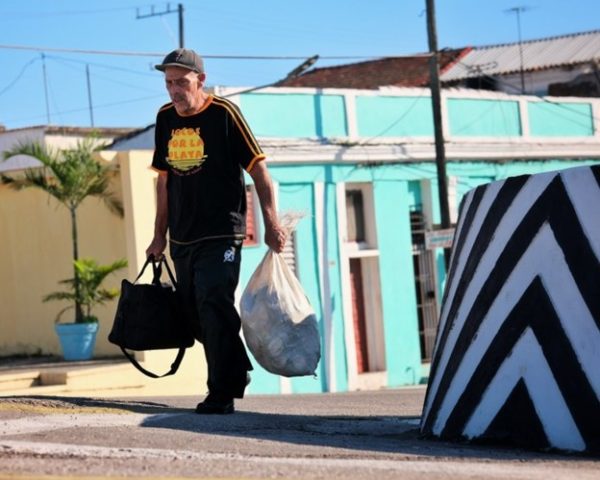
When it stopped functioning as a hotel, the building became a housing project. Curiously, this happened before 1959. The transformations made for this purpose, the intense domestic use, the lack of maintenance, and the inclemency of the weather accelerated its deterioration. Over the years, the predatory action of needy neighbors, probably unaware of the heritage value, made off with the woodwork, ironwork, marble slabs of the floors, bricks, and many other interior decorative elements. By the year 2000, significant collapses had already occurred.
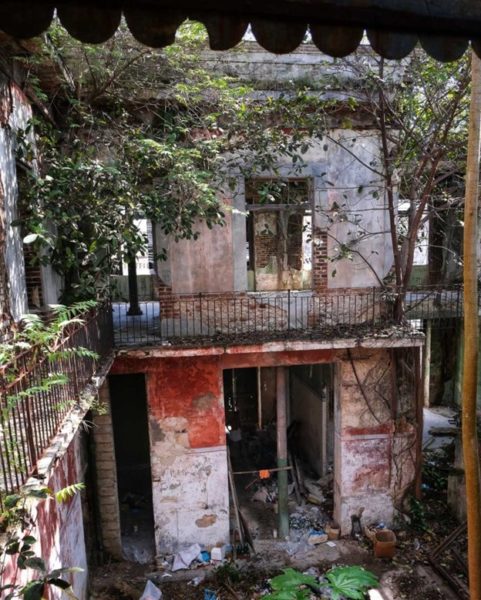
Since we’re talking about a sense of belonging and things that shouldn’t happen, but do, let me tell you this anecdote. In 2005, after working as a journalist at a provincial television station, I became a bicitaxi driver.
Once, at 3 am, after a Los Van Van concert, a couple asked me to take them to the Versalles bridge. We agreed it would be 40 pesos, which meant something back then. After a good while sweating and pedaling, we arrived at the requested destination.
The girl got off the bicitaxi and went into the one hundred thousand pesos building, while the guy rummaged in his wallet, from which he took out a single 20-peso bill. “I’ll go up and bring you the rest, wait,” he said and put it back. And I said no, that 20 was enough. But he pretended to be offended by my lack of trust and insisted on paying what was agreed upon. He followed his girlfriend’s steps, up the white marble stairs, and I, who knew the trick by then, went up after him.
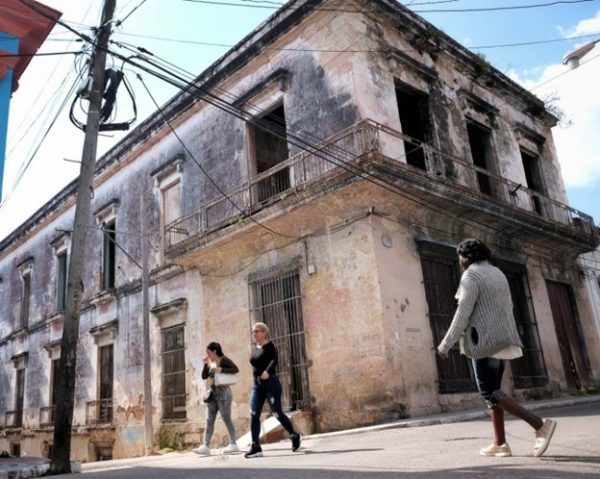
In the darkness and amidst the collapsed walls, I could barely see where he had gone. A dog started barking, and I started to get scared. If I fell into the landfill below or got a bad blow, they wouldn’t find me so easily. Besides, I had left the bike-taxi below, unlocked. So, I shouted a couple of obscenities as dirty as possible and, as the anger didn’t subside, I grabbed and threw a couple of halves of good bricks against the door.
Then I ran. Then I pedaled, with my trembling and lonely soul, thinking not about 40 or one hundred thousand pesos, but about wounded pride and human improvement.
The situation of the building that still remains in my memory, far from improving, became more complicated. In the absence of other sources of funding, the idea of turning it —not into an institution useful to the people of Matanzas— into a shopping center for the TRD Caribe Store Chain was considered. The actions were never carried out, and in 2009, after other partial collapses, it was finally demolished. Then came this beautiful park, whose fountain the people of Matanzas detest.
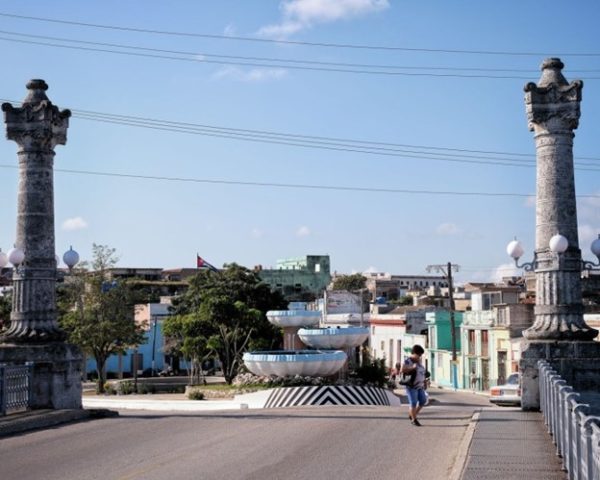
Who designed it, who approved it, and who financed it, are pieces of information that I don’t know. But well, we’re used to it. Something similar happened with another building, “The White Elephant,” which also serves as an entrance to the city center when you come from Varadero. To this one, before it collapsed, they did manage to turn it into a shopping center that sells products in foreign currency. No one else could take charge of the restoration, someone would say.
It’s not a problem unique to Matanzas: the phantom of destruction haunts Cuba. Physical and spiritual destruction of the nation’s heritage. Buildings that hold invaluable cultural value are being turned into bars and discos, as they are among the few businesses that guarantee the fastest recovery of invested capital, and even then, there is no guarantee or trust. It’s the curse of the blockade, and of being poor, someone would say. When the next buildings completely collapses, the municipality will only be able to afford the construction of new parks.
